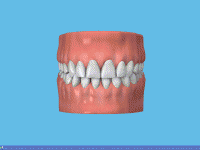 The grooves (fissures) on the biting surface of teeth can be very deep and steep sided, making it easy for sticky food to trap in there but too narrow for a tooth brush bristle. Eventually this may cause decay which needs a filling. In some teeth it is necessary to bond a thin plastic layer of fissure sealant on the top of the tooth, which fills in the deep grooves and make the surface easily cleanable – so preventing decay.
The grooves (fissures) on the biting surface of teeth can be very deep and steep sided, making it easy for sticky food to trap in there but too narrow for a tooth brush bristle. Eventually this may cause decay which needs a filling. In some teeth it is necessary to bond a thin plastic layer of fissure sealant on the top of the tooth, which fills in the deep grooves and make the surface easily cleanable – so preventing decay.
FAQs about fissure sealants
What are sealants?
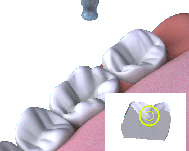 Sealants are a safe and painless way of protecting your children’s teeth from decay. A sealant is a protective plastic coating, which is applied to the biting surfaces of the back teeth. The sealant forms a hard shield that keeps food and bacteria from getting into the tiny grooves in the teeth and causing decay.
Sealants are a safe and painless way of protecting your children’s teeth from decay. A sealant is a protective plastic coating, which is applied to the biting surfaces of the back teeth. The sealant forms a hard shield that keeps food and bacteria from getting into the tiny grooves in the teeth and causing decay.
Which teeth should be sealed?
Sealants are only applied to the back teeth – the molars and premolars. These are the teeth that have pits and fissures on their biting surfaces. Your dentist will tell you which teeth should be sealed after they have examined them, and checked whether the fissures are deep enough for sealing to help. Some teeth naturally form with deep grooves, which will need to be sealed, others with shallow ones which will not need sealing
What is involved?
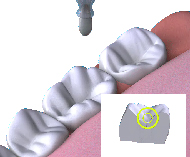 The process is usually quick and straightforward taking only a few minutes per tooth. The tooth is thoroughly cleaned, prepared with a special solution, and dried. The liquid sealant is then applied and allowed to set hard – usually by shining an bright blue light onto it.
The process is usually quick and straightforward taking only a few minutes per tooth. The tooth is thoroughly cleaned, prepared with a special solution, and dried. The liquid sealant is then applied and allowed to set hard – usually by shining an bright blue light onto it.
Will my child feel it?
No, it is totally pain free, and the teeth do not feel any different afterwards.
How long do they last?
Sealants usually last for many years, but your dentist will want to check them regularly to make sure that the seal is still intact. They can wear over time, and sometimes the dentist needs to add or replace some sealant to be sure that no decay can start underneath them.
How do they work?
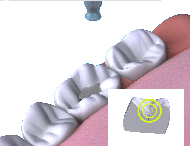 The sealant forms a smooth, protective barrier, by covering all the little grooves and dips in the surface of the tooth. Dental decay easily starts in these grooves.
The sealant forms a smooth, protective barrier, by covering all the little grooves and dips in the surface of the tooth. Dental decay easily starts in these grooves.
When should this be done?
Sealants may be applied as soon as the permanent teeth start to come through. This is usually between 6 aand 14 years of age. Sealants are especially applied if any signs of staining or early decay are seen in fissures.
Do my children still have to clean their teeth?
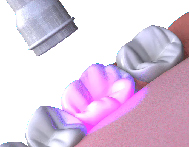 Yes. It is still vital that they do this. The smooth, sealed surface is now much easier to keep clean and healthy with normal toothbrushing. Using a fluoride toothpaste will also help to protect your children’s teeth.
Yes. It is still vital that they do this. The smooth, sealed surface is now much easier to keep clean and healthy with normal toothbrushing. Using a fluoride toothpaste will also help to protect your children’s teeth.
Pit and fissure sealing reduces tooth decay and the number of fillings your child might need.
Whom do I ask about the treatment?
If you would like to know more about the treatment, ask your dentist. They will tell you if fissure sealing will help your children’s teeth, and if it is the right time to do it.






